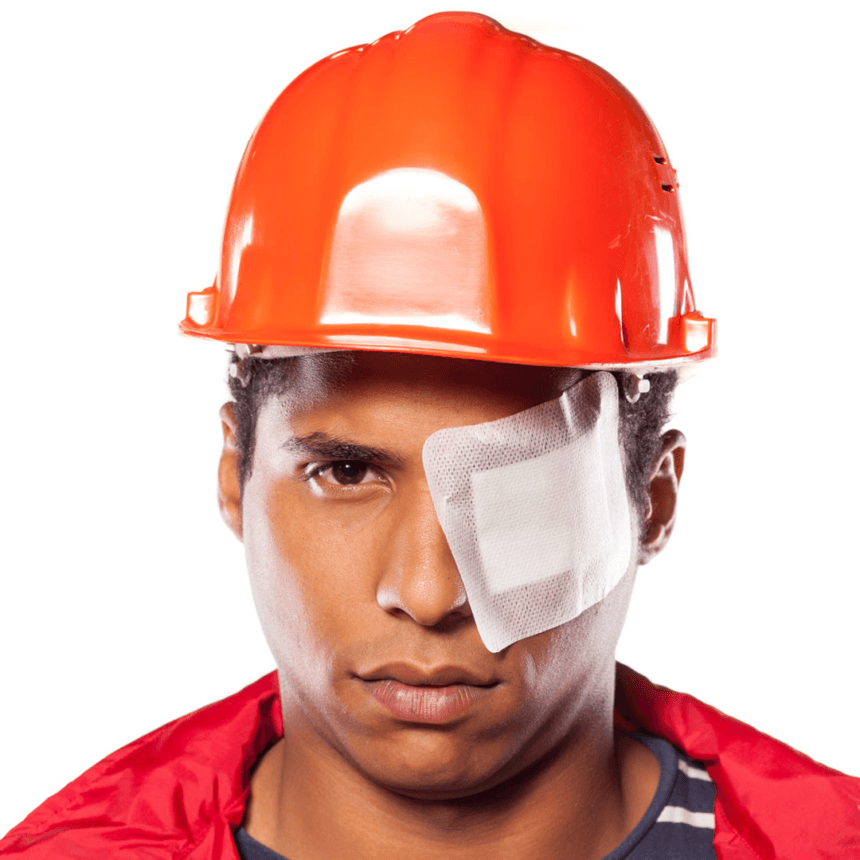We heavily rely on our eyes, one of the body’s most vital organs, to carry out our daily tasks. The eyes are mostly exposed, making them prone to a wide variety of injuries. Accidents, sports, or daily activities can cause eye injuries that can range in severity from minor irritations to severe trauma.
In this article, we’ll look at some typical eye injuries and discuss how to avoid them.
1. Corneal Abrasions
A common eye injury called a corneal abrasion involves a scratch or scrape on the cornea, the transparent front part of the eye. A number of things, such as wearing contact lenses, dust, sand, or other foreign objects, or accidental trauma, can result in corneal abrasions.
Symptoms of corneal abrasions include eye pain, redness, sensitivity to light, tearing, and foreign body sensation in the eye. In some circumstances, vision might be impacted.
In case of corneal abrasion avoid touching or rubbing the injured eye or splashing water. Use lubricating eye drops to soothe the eye. Your doctor may also recommend antibiotic eyedrops to prevent infection.
To help safeguard the eye and encourage healing, a patch or protective contact lenses may occasionally be applied.
2. Chemical Burns
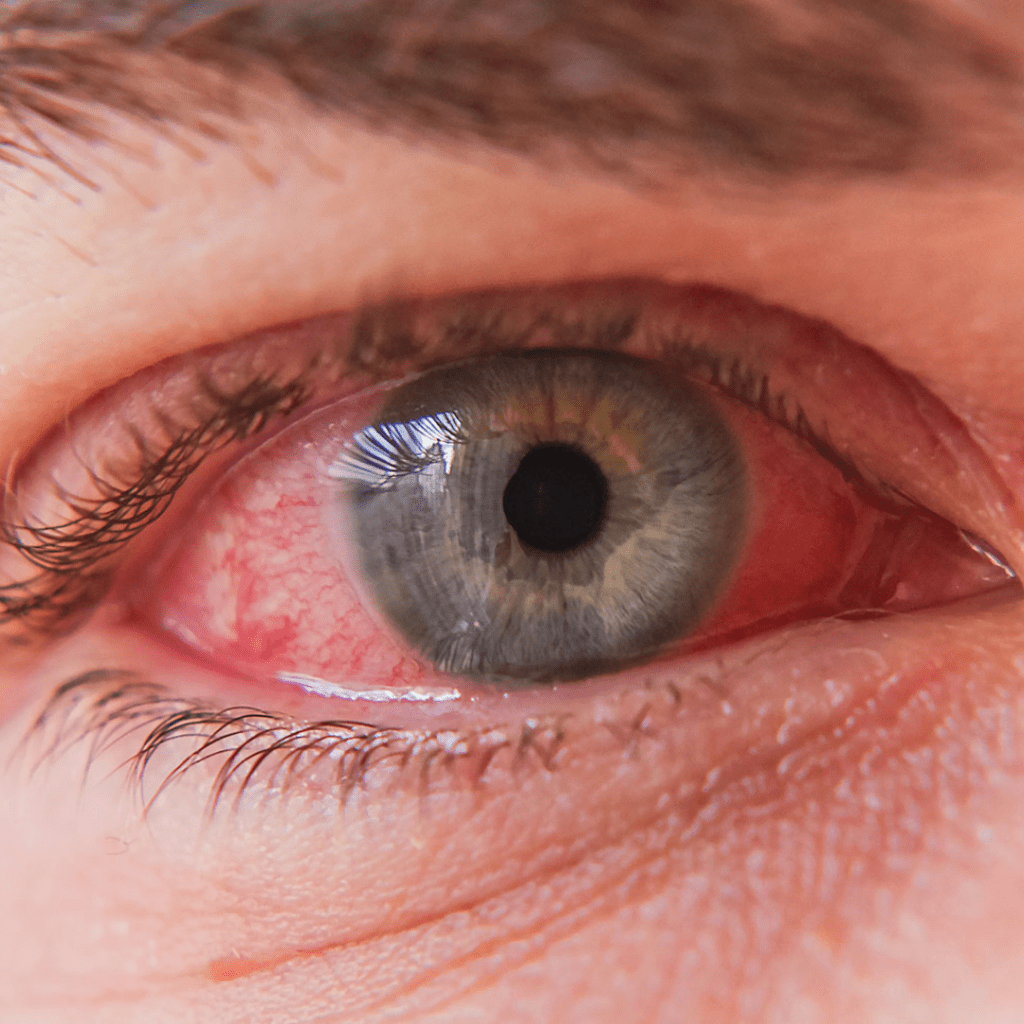
When a chemical substance comes into contact with the eye and damages the ocular surface, chemical eye injuries result. If they are not treated right away, these injuries can cause a variety of symptoms and become serious.
Causes: Exposure to a variety of substances, such as acids, alkalis, cleaning products, and industrial chemicals, can result in chemical injuries to the eyes. The type, concentration, and length of the chemical’s contact with the eye all affect how serious the injury is.
Symptoms: Pain, burning, redness, tearing, blurred vision, and sensitivity to light are all signs of a chemical injury to the eye. In extreme circumstances, the injury may permanently harm the cornea, impairing vision.
Treatment: If the chemicals enter your eyes, contact your healthcare provider immediately. In the meantime, washing your eyes gently will keep the surface of your eyes clean. Even if the initial symptoms seem to go away, get medical help as soon as you can. The treatment of chemical eye injuries requires quick action. This is started by giving the affected eye at least 20 minutes of clean water flushing. This will assist in removing the chemical from the surface of the eye.
The treatment options include medications to control pain and inflammation, antibiotic eye drops to prevent infection, and surgery in extreme cases.
3. Black Eye
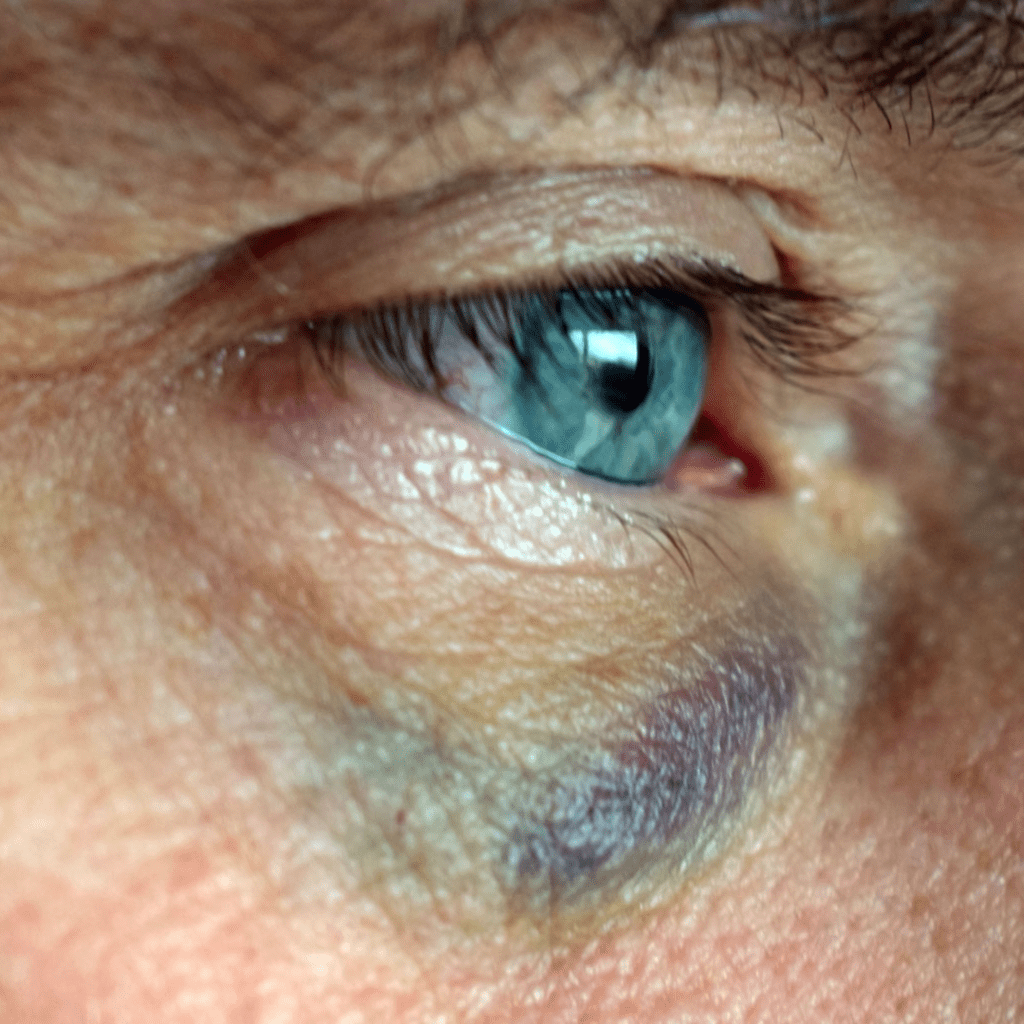
A direct blow to the face or head frequently results in a black eye, also known as a periorbital hematoma, which is bruising around the eye. Blood seeps through the skin as a result of the wound, causing swelling and discoloration around the eye.
Black eyes are frequently caused by mishaps, falls, sports injuries, and physical assaults.
Swelling, pain, and discoloration around the eye are signs of a black eye. Over time, this discoloration may transition from red or purple to yellow or green.
In order to reduce swelling and ease pain, a cold compress is frequently used as treatment for black eyes. The use of over-the-counter painkillers is another option for easing discomfort.
Seeking medical help may be necessary, particularly if there is a chance of suffering an orbital fracture or if the black eye is accompanied by vision changes or excruciating pain.
4. Foreign Objects in the Eye
A foreign body in the eye refers to any object, such as dust, dirt, or a small piece of metal, that enters and becomes trapped in the eye. This might result in corneal abrasion or infection, as well as irritation and discomfort.
Causes: There are a variety of activities that can lead to foreign bodies in the eyes, including working in a dusty environment, playing outdoor sports, or just walking outside on a windy day.
Pain, redness, tearing, and gritty feeling are the most typical signs of a foreign body in the eye. Leaving the foreign body in place may cause more serious symptoms such as blurred vision, light sensitivity, or an infection.
Treatment: Gently flushing the eye with saline solution or water can usually remove a foreign body. Medical attention might be required if the foreign body is embedded or difficult to remove. A medical expert can safely remove the foreign body and avoid more harm by using specialised tools and methods.
5. Orbital fracture:
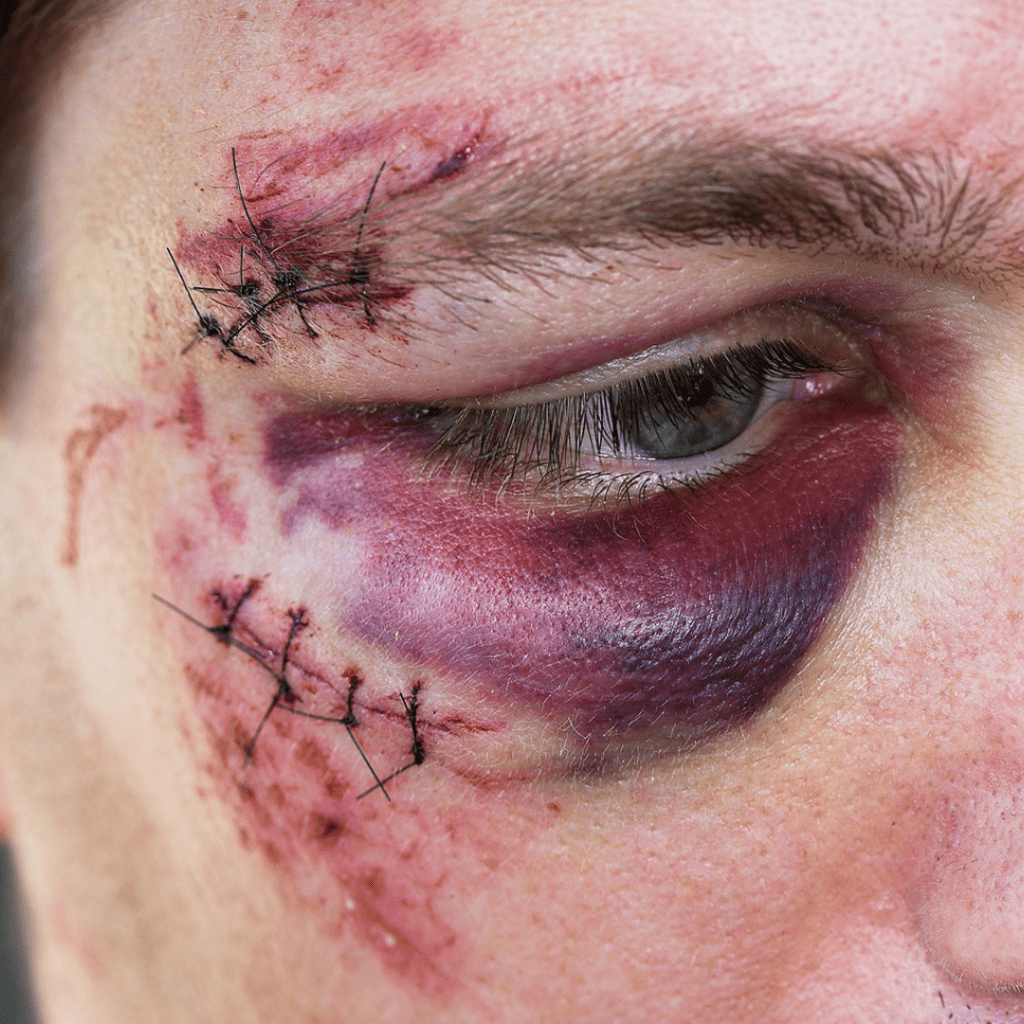
An orbital fracture is a specific kind of eye injury in which the orbit, the set of bones that surrounds the eye, breaks. This may result from a direct blow to the face or eye, such as might occur in a car accident or during sports.
Swelling, bruising, and pain around the eye, as well as double vision and vision changes, are signs of an orbital fracture. In severe cases, the eye may be protruded forward or sunken in.
If you suspect an orbital fracture, it’s crucial to seek immediate medical attention because it can result in serious complications like vision loss or infection.
To treat an orbital fracture, doctors typically require surgery to fix the broken bone, release any trapped muscle, and realign the eye. Depending on the type of fracture and the patient’s general health, recovery times can change.
6. Bloodshot eyes or subconjunctival haemorrhage (SCH):
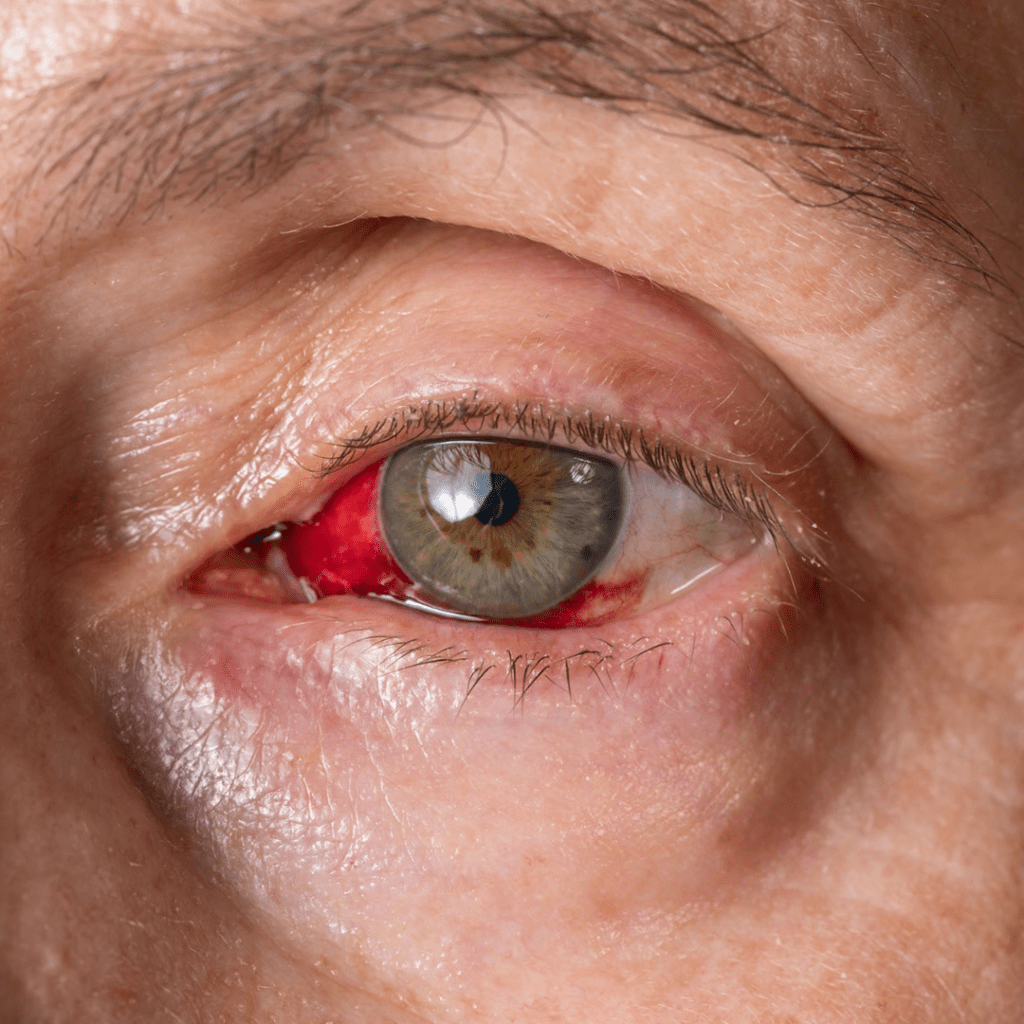
Rupturing of blood vessels in the conjunctiva, the thin, transparent layer covering the white part of the eye, causes a subconjunctival hemorrhage (SCH).
Causes: Minor eye injuries like excessive rubbing or a sharp rise in blood pressure frequently result in subconjunctival haemorrhages. Infections in the eyes, eye surgery, or using blood thinners are possible additional causes.
The primary symptom of a subconjunctival haemorrhage is an appearance of the eye that is bright red or bloodshot. The condition rarely causes pain, and there is no tearing or discharge.
Subconjunctival haemorrhages usually resolve on their own within a few weeks without treatment. Artificial tears can be used to relieve stinging or dryness in the affected eye.
A medical condition, such as high blood pressure, which contributed to the subconjunctival haemorrhage may need to be treated to prevent further bleeding.
PREVENTION:
Here are some preventive measures that can be taken to avoid common eye injuries:
- Wear Protective Eyewear: When engaging in activities that could result in eye injury, such as playing sports, using power tools, or doing home repairs, always wear the appropriate protective eyewear, such as safety glasses or goggles.
- Be Careful When Working with Chemicals: Always use the proper eye protection when working with chemicals or cleaning products, and make sure to read and abide by the safety instructions. To avoid accidental exposure, keep chemicals properly labelled and stored in a safe place and away from the kids.
- Follow Good Hygiene Practices When Wearing Contact Lenses: If you wear contact lenses, practice good hygiene by washing your hands before handling them, cleaning and storing them correctly, and avoiding wearing them for extended periods of time.
- Touching or rubbing the eyes can cause an infection or injury. Do not rub or touch them.. Make sure to thoroughly wash your hands before touching your eyes if you must.
- Keep Sharp or Dangerous Objects Away in order to avoid accidental injury. .
In conclusion, eye injuries are serious and can harm the eyes permanently. By taking precautions, we can lessen the possibility of eye damage and maintain the health of our eyes. Avoid rubbing your eyes, wear safety goggles whenever playing sports or doing activities that could injure your eyes, and use caution when handling sharp objects and chemicals. Keep in mind that prevention is always preferable to cure.

